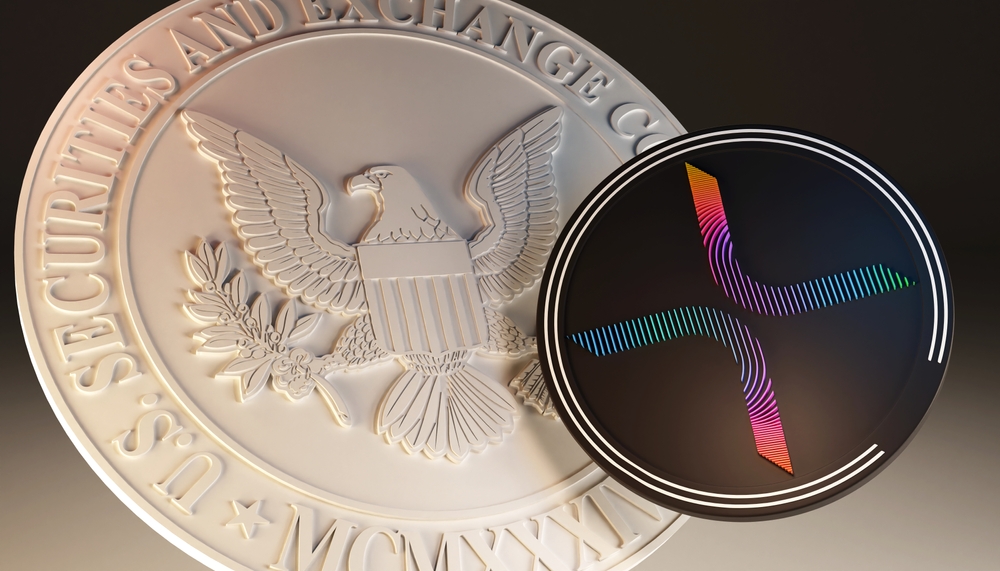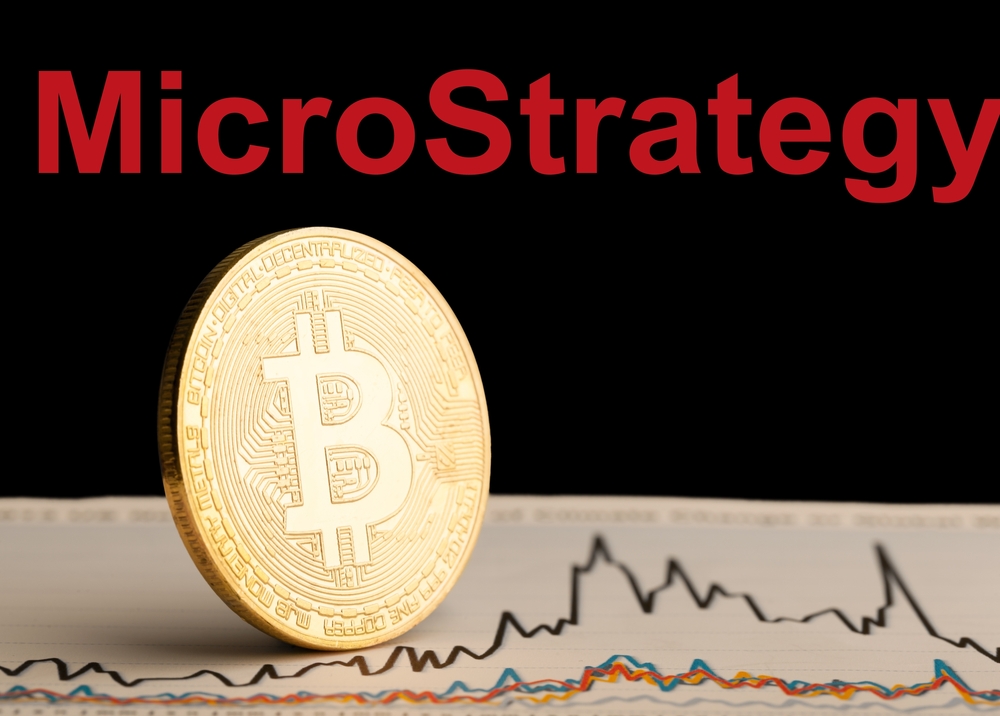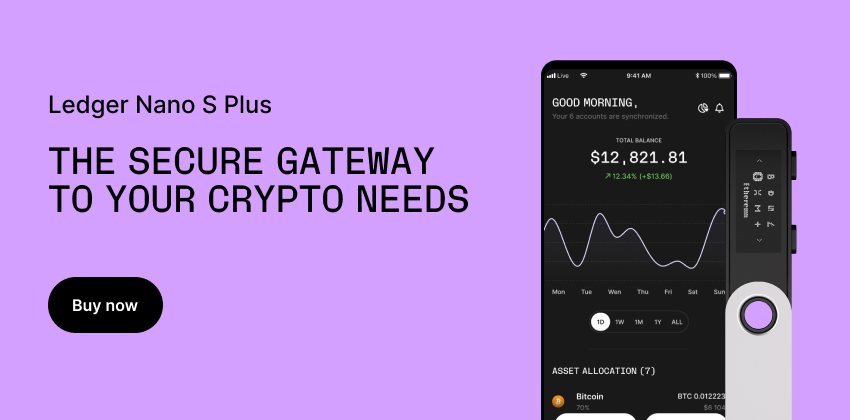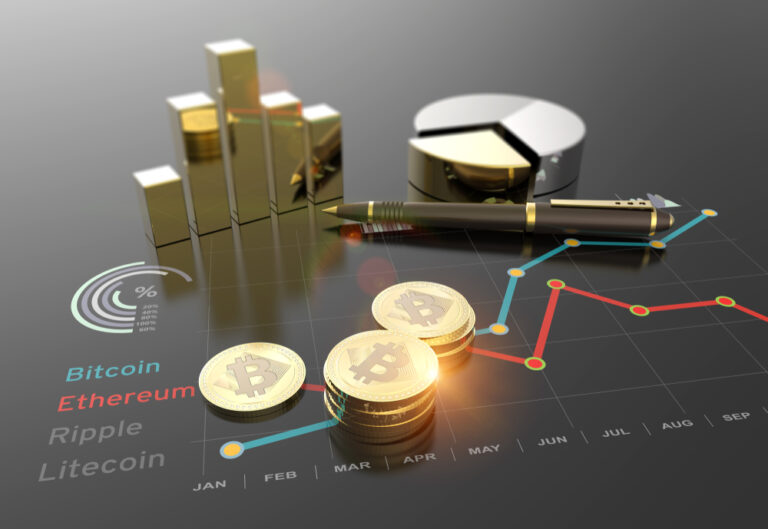Table of Contents
ToggleIntroduction
Ripple’s RLUSD is a new stablecoin designed to maintain a constant value of one US dollar. This digital currency is set to launch on December 4, 2024, after receiving approval from the New York Department of Financial Services. RLUSD will be fully backed by a segregated reserve of cash, cash equivalents, and US government bonds, making it a reliable option for digital transactions.
The stablecoin will be issued on both the XRP Ledger and Ethereum blockchains, providing users with access to deep liquidity and instant settlement. Ripple has partnered with several exchange partners and market makers to ensure global distribution and boost trading volumes. This move aims to enhance the overall utility of the XRP Ledger and XRP cryptocurrency.
RLUSD is expected to have various business use cases, including cross-border payments and remittances. By offering a stable digital asset pegged to the US dollar, Ripple aims to provide a solution for those seeking more credible stablecoins on the XRP Ledger.
Key Takeaways
- RLUSD is a fully-backed stablecoin pegged to the US dollar, launching in December 2024.
- The stablecoin will be available on both XRP Ledger and Ethereum blockchains.
- Ripple has secured partnerships for global distribution and aims to enhance XRP’s utility.
Understanding Ripple’s RLUSD
Ripple’s RLUSD is a new stablecoin designed to maintain a constant value of one US dollar. It aims to provide a reliable alternative within Ripple’s ecosystem and enhance the utility of the XRP Ledger.
Definition and Significance
RLUSD stands for Ripple USD. It’s a digital token pegged to the US dollar. RLUSD is built to offer stability in the volatile crypto market.
The stablecoin will be issued on both the XRP Ledger and Ethereum blockchains. This dual issuance aims to increase its reach and usability.
RLUSD’s main purpose is to serve as a dependable payment option. It seeks to overcome the high volatility often seen with other cryptocurrencies like XRP.
The launch of RLUSD responds to community demand for credible stablecoins on the XRP Ledger. This move could potentially boost trading volumes and enhance the overall utility of the XRP ecosystem.
Mechanics of Ripple’s RLUSD
RLUSD is designed to maintain a 1:1 ratio with the US dollar. This means one RLUSD token should always equal one US dollar.
To ensure stability, RLUSD is fully backed by a reserve. This reserve consists of:
- Cash
- Cash equivalents
- US government bonds
Ripple plans to publish monthly reports from third-party auditors. These reports will verify the backing of RLUSD tokens.
As of October 2023, 47.1 million RLUSD tokens were already in circulation on XRP Ledger and Ethereum. The public launch is expected sometime in 2024, subject to regulatory approval.
RLUSD’s availability across different blockchains aims to improve its liquidity and accessibility for users worldwide.
Historical Context of Ripple’s RLUSD
Ripple’s RLUSD stablecoin emerged as a significant development in the cryptocurrency landscape. Its creation and growth reflect the evolving needs of the digital finance sector.
Inception and Evolution
Ripple Labs introduced RLUSD as a regulated stablecoin to meet growing demand for reliable digital assets. The company designed RLUSD to maintain a constant value of one US dollar, backed by cash and cash equivalents.
RLUSD was built on both the XRP Ledger and Ethereum blockchains. This dual-chain approach aimed to increase its versatility and adoption.
Ripple’s focus on regulatory compliance set RLUSD apart from many other stablecoins. The company worked closely with financial regulators to ensure RLUSD met strict standards.
Major Milestones
RLUSD entered a private beta phase before its public launch. During this time, 47.1 million RLUSD tokens were already in circulation on XRP Ledger and Ethereum by October 2023.
A key milestone was the anticipated approval from the New York Department of Financial Services (NYDFS). This approval was expected as early as December 4, 2024, marking a significant step for RLUSD’s legitimacy.
Ripple’s president highlighted RLUSD’s role in expanding the company’s focus on DeFi. This move positioned RLUSD as complementary to XRP, rather than a replacement.
Ripple’s RLUSD in the Financial Landscape
Ripple’s RLUSD is poised to make waves in the financial sector. This new stablecoin aims to offer stability and utility in digital transactions.
Comparative Analysis with Other Currencies
RLUSD stands out from other digital currencies due to its regulatory compliance. Unlike many cryptocurrencies, it is designed to maintain a constant value of one US dollar.
The stablecoin will be fully backed by cash and cash equivalents. This gives it an edge over some other digital assets that may have less stable backing.
RLUSD is set to be issued on both the XRP Ledger and Ethereum blockchains. This dual-chain approach could offer more flexibility than single-chain stablecoins.
Current Market Trends
The stablecoin market is growing, and RLUSD is entering at a crucial time. Approval from the New York Department of Financial Services is expected soon, which could boost its credibility.
Market volatility has increased demand for stable digital assets. RLUSD aims to meet this need while complying with regulations.
Ripple’s partnerships with exchanges for global distribution may help RLUSD gain quick adoption. This could lead to its use in various financial scenarios, including cross-border payments and tokenization of real-world assets.
Technological Infrastructure
Ripple’s RLUSD stablecoin relies on advanced blockchain technology and robust security protocols. These elements form the backbone of its reliable and efficient digital asset infrastructure.
Blockchain Technology
RLUSD operates on two major blockchain networks: the XRP Ledger and Ethereum. This dual-chain approach gives users more flexibility and wider access. The XRP Ledger offers fast, low-cost transactions. It can handle over 1,500 transactions per second with 3-5 second settlement times.
Ethereum, on the other hand, provides smart contract functionality. This allows for more complex financial operations using RLUSD. The use of these established blockchains helps ensure RLUSD’s stability and interoperability with other digital assets.
Security Protocols
RLUSD implements strong security measures to protect user funds and maintain trust. The stablecoin uses industry-standard encryption techniques to safeguard transactions and user data. Multi-signature wallets add an extra layer of security for large transactions.
Regular security audits are conducted to identify and address potential vulnerabilities. Ripple also employs a team of cybersecurity experts to monitor the network for any suspicious activity.
To maintain its 1:1 peg with the US dollar, RLUSD is fully backed by cash and cash equivalents. These reserves are held in segregated accounts, adding another level of security and transparency for users.
Economic Theories Behind Ripple’s RLUSD
Ripple’s RLUSD stablecoin is built on economic principles that aim to maintain price stability and facilitate efficient transactions. The token’s design incorporates elements of monetary theory and market dynamics.
Demand and Supply Dynamics
RLUSD’s value relies on the balance between supply and demand. As a fully backed stablecoin, each RLUSD token is supported by reserve assets. This backing creates trust and stability in the token’s value.
The supply of RLUSD is flexible, adjusting based on market demand. When demand increases, more tokens can be minted. When demand decreases, tokens can be burned or removed from circulation.
Demand for RLUSD stems from its utility in cross-border payments and as a store of value. Its potential to bridge traditional finance and blockchain technology may drive adoption in financial markets.
Price Determination
RLUSD aims to maintain a 1:1 peg with the US dollar. This peg is supported by several economic mechanisms:
Reserve backing: RLUSD is backed by cash, cash equivalents, and short-term U.S. Treasury bonds.
Arbitrage: If RLUSD’s price deviates from $1, traders can profit by buying or selling, which helps restore the peg.
Transparency: Regular attestations of reserves build trust and support price stability.
The token’s inclusion in global forex data suggests growing recognition of its role in currency markets. This recognition may further reinforce its price stability and utility.
Legal Framework and Compliance
Ripple’s RLUSD stablecoin faces a complex regulatory landscape. The company must navigate strict legal requirements and overcome potential hurdles to launch and operate this new digital asset.
Regulatory Bodies
The New York Department of Financial Services (NYDFS) plays a key role in approving RLUSD. This agency oversees digital asset businesses in New York, one of the strictest jurisdictions for crypto regulation.
Ripple operates under a New York Trust Company Charter. This license allows the company to provide custodial services for digital assets and issue stablecoins.
The U.S. Securities and Exchange Commission (SEC) may also scrutinize RLUSD. Their stance on stablecoins could impact Ripple’s plans.
Legal Challenges
Ripple faces ongoing litigation with the SEC over XRP’s classification. This case could affect RLUSD’s launch and adoption.
The company must ensure RLUSD complies with anti-money laundering (AML) and know-your-customer (KYC) rules. These regulations aim to prevent financial crimes.
Ripple partnered with exchanges like Uphold, Bitstamp, and Bitso to support RLUSD. These partnerships may help address regulatory concerns and boost compliance efforts.
The evolving nature of crypto laws poses ongoing challenges. Ripple must stay adaptable to changing regulations across different jurisdictions.
Impact of Ripple’s RLUSD on Global Trade
Ripple’s RLUSD stablecoin aims to streamline international commerce and financial operations. This digital asset could reshape how businesses and individuals conduct cross-border transactions and manage foreign exchange risks.
Cross-Border Transactions
RLUSD brings new possibilities for global payments. It allows for real-time, 24/7 transfers across borders. This speed can significantly reduce wait times for international trade settlements.
Companies may find it easier to pay overseas suppliers or receive payments from foreign customers. The stablecoin’s design aims to lower transaction costs compared to traditional banking methods.
RLUSD operates on the XRP Ledger, known for its fast settlement times and low fees. This infrastructure could make small international transactions more economical, potentially boosting global e-commerce.
Foreign Exchange Considerations
RLUSD’s stable value pegged to the US dollar offers traders and businesses a way to reduce volatility risks in cross-border deals. It may serve as a reliable store of value during currency fluctuations.
For companies operating in multiple countries, RLUSD could simplify treasury management. They might hold RLUSD as a hedge against currency swings without the need for complex forex instruments.
The stablecoin’s integration into forex markets may provide new trading pairs and liquidity options. This could lead to more efficient price discovery in currency exchange.
Ripple’s RLUSD and Society
Ripple’s RLUSD stablecoin aims to transform financial transactions and impact society. Its potential adoption and implications deserve careful consideration.
Adoption Amongst Consumers
RLUSD is designed to maintain a constant value of one US dollar. This stability makes it attractive for everyday use.
Consumers may find RLUSD useful for online purchases, remittances, and savings. Its 1:1 backing by cash and cash equivalents provides confidence.
RLUSD’s availability on multiple blockchains could increase accessibility. This may lead to wider adoption in various digital payment systems.
The stablecoin’s integration into Ripple’s cross-border payment solution could improve transaction efficiency. Faster and cheaper international transfers may attract more users.
Social and Ethical Implications
RLUSD’s launch raises questions about financial inclusion and equality. It could provide access to stable currency for those in economically volatile regions.
The stablecoin’s regulatory compliance, including potential NYDFS approval, may set new standards for digital assets. This could influence future cryptocurrency regulations.
Privacy concerns arise with increased digital transactions. Ripple must balance user privacy with regulatory requirements.
RLUSD’s impact on traditional banking systems and currencies needs careful monitoring. It could challenge existing financial structures and power dynamics.
Ripple’s RLUSD in the Digital Ecosystem
Ripple’s RLUSD stablecoin is set to make waves in the digital financial landscape. This new offering aims to bridge traditional finance with the world of cryptocurrencies and blockchain technology.
Integration with Apps and Services
RLUSD is designed to work on multiple blockchains, including the XRP Ledger and Ethereum. This multi-chain approach opens up a wide range of possibilities for integration with existing apps and services.
Developers can use RLUSD to create new financial products and services. These might include:
- Payment apps
- Remittance platforms
- Decentralized finance (DeFi) protocols
The stablecoin’s ability to settle transactions quickly makes it ideal for real-time payments. This feature could be particularly useful for cross-border transfers and e-commerce applications.
Future Opportunities
As RLUSD gains traction, it could unlock new opportunities in the digital ecosystem. The approval from the New York Department of Financial Services positions RLUSD as a regulated player in the stablecoin market.
This regulatory compliance may attract institutional investors and large corporations. They could use RLUSD for:
- Treasury management
- International trade settlements
- Liquidity pools in decentralized exchanges
The stablecoin’s potential extends beyond finance. It could power new business models in areas like:
- Supply chain management
- Digital identity verification
- Tokenization of real-world assets
As the digital ecosystem evolves, RLUSD is poised to play a significant role in shaping the future of money and value transfer.
Challenges and Risks Associated with Ripple’s RLUSD
Ripple’s RLUSD faces several hurdles as it enters the stablecoin market. These include managing price stability and addressing potential security vulnerabilities.
Volatility and Risk Management
RLUSD aims to maintain a constant value of one US dollar. This goal presents challenges in volatile crypto markets. Ripple must ensure adequate reserves to back the stablecoin.
The company plans to use cash and cash equivalents for the reserve. This approach helps reduce risk, but market swings can still impact stability.
Regulatory changes pose another risk. New rules could affect how RLUSD operates or is backed. Ripple needs to stay flexible to adapt to evolving regulations.
Liquidity is crucial for RLUSD’s success. The stablecoin must have enough trading volume to function smoothly. Low liquidity could lead to price fluctuations and user frustration.
Security Concerns
As a digital asset, RLUSD faces cybersecurity threats. Hackers may target the stablecoin or its underlying technology.
Ripple must implement robust security measures to protect RLUSD and user funds. This includes regular audits and updates to the system.
The XRP Ledger and Ethereum blockchains will host RLUSD. While these platforms are established, they’re not immune to attacks or technical issues.
Smart contract vulnerabilities could pose risks. Any flaws in RLUSD’s code might be exploited by malicious actors. Rigorous testing and third-party audits are essential to minimize these risks.
User security is another concern. Educating users about safe storage and handling of RLUSD is crucial to prevent theft or loss of funds.
Future Prospects of Ripple’s RLUSD
Ripple’s RLUSD stablecoin aims to make a big impact in the digital payments world. Its launch could bring new opportunities and challenges for the company and the broader crypto market.
Innovations and Developments
RLUSD is set to launch on December 4, 2024, with approval from the New York Department of Financial Services. This regulatory green light gives RLUSD a strong start in the competitive stablecoin market.
The stablecoin will be pegged to the U.S. dollar and overcollateralized, which means it will have more backing than its face value. This extra security could make it attractive to users and investors.
RLUSD will be available on both the XRP Ledger and Ethereum blockchains. This dual-chain approach may help it reach a wider user base and integrate with more crypto projects.
Predictions and Expert Opinions
Experts think RLUSD could help Ripple compete in the $190 billion global stablecoin market. The growing crypto-friendly climate in some countries might boost its adoption.
Some analysts predict RLUSD will become a key player in cross-border payments. Its link to Ripple’s existing payment networks could give it an edge over other stablecoins.
There are concerns about regulatory challenges. The ongoing dispute between Ripple and the SEC over XRP could impact RLUSD’s future. However, RLUSD’s separate regulatory approval may help it avoid some of these issues.
Frequently Asked Questions
RLUSD is Ripple’s new stablecoin project. Many people want to know about buying it, its price, and how it might affect XRP. Here are some common questions about RLUSD.
How can I purchase RLUSD?
RLUSD is not available for purchase yet. It’s still in private beta mode. Ripple plans to launch RLUSD publicly in 2024, but the exact date isn’t set.
What is the current price of RLUSD?
RLUSD is designed to be a stablecoin pegged to the US dollar. This means one RLUSD should always be worth one US dollar. The price should stay stable at $1.
What are the predictions for RLUSD’s future value?
As a stablecoin, RLUSD’s value should remain at $1. Its future importance may grow if it becomes widely used for payments and trading. But its dollar value isn’t expected to change.
Could RLUSD potentially replace XRP?
RLUSD and XRP serve different purposes. RLUSD is a stablecoin for steady value. XRP is used for fast, cheap transfers. They’re meant to work together, not replace each other.
How will the introduction of RLUSD influence the value of XRP?
RLUSD might boost XRP’s value by bringing more users to Ripple’s network. It could increase XRP use for trading pairs. But some worry it might reduce XRP’s role in payments.
When was RLUSD officially launched?
RLUSD hasn’t officially launched yet. It’s still being tested privately. Ripple plans to release it publicly sometime in 2024, pending regulatory approvals.




















